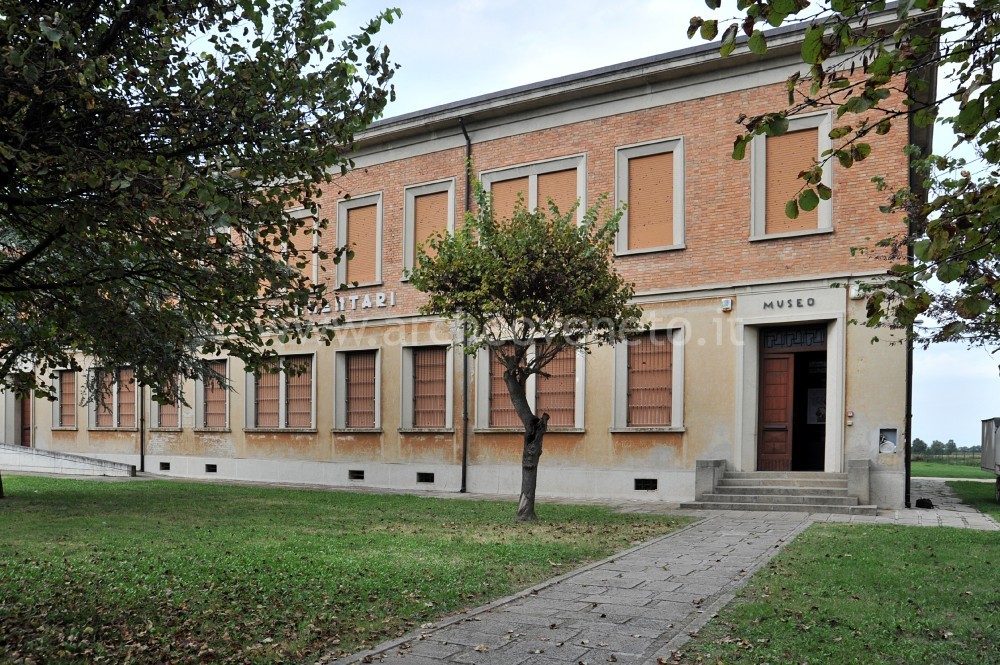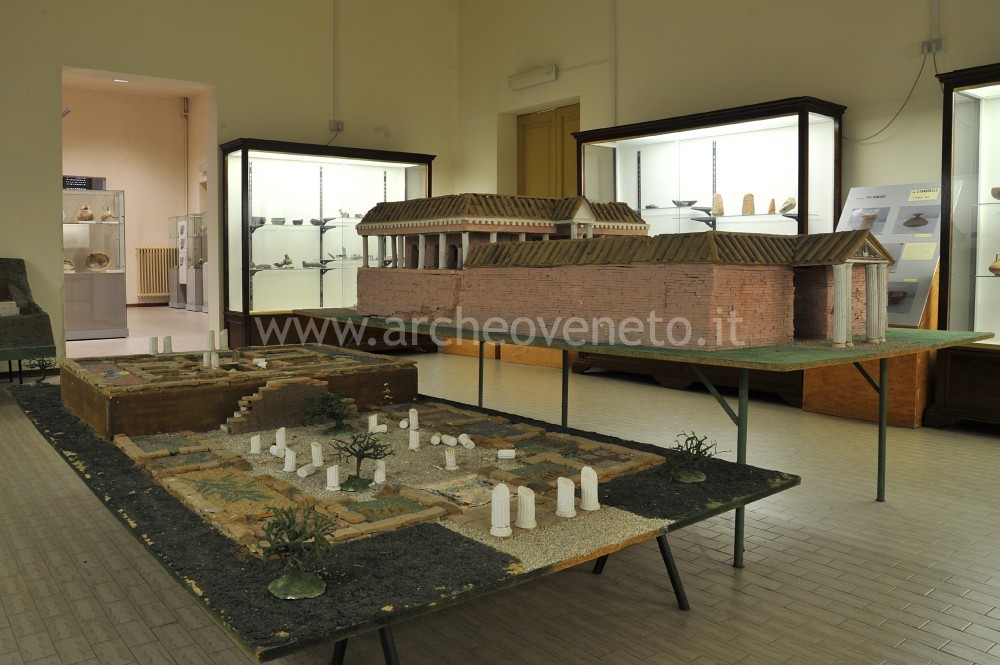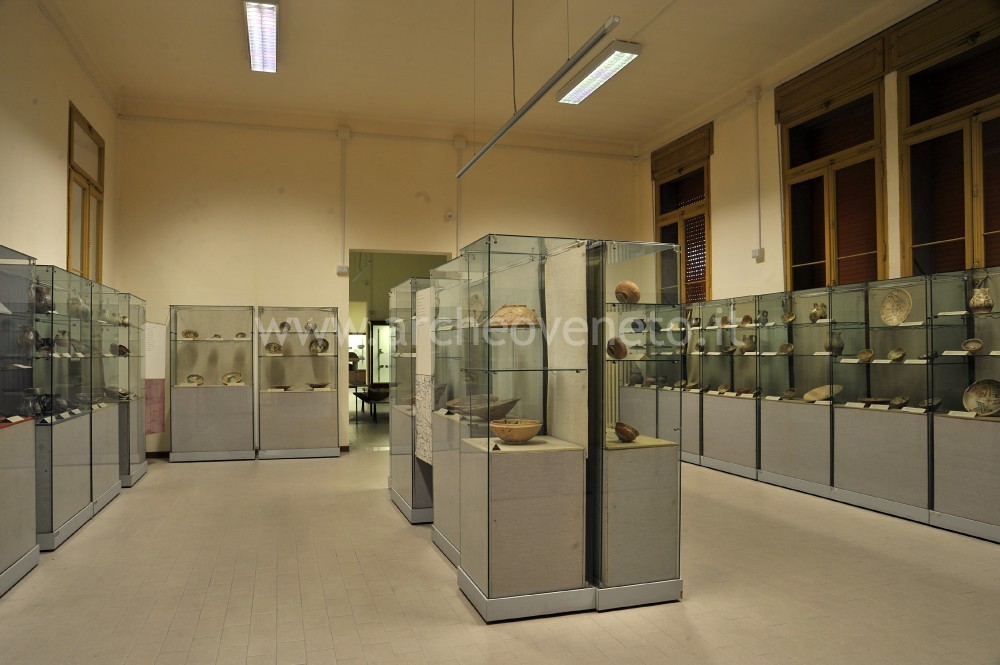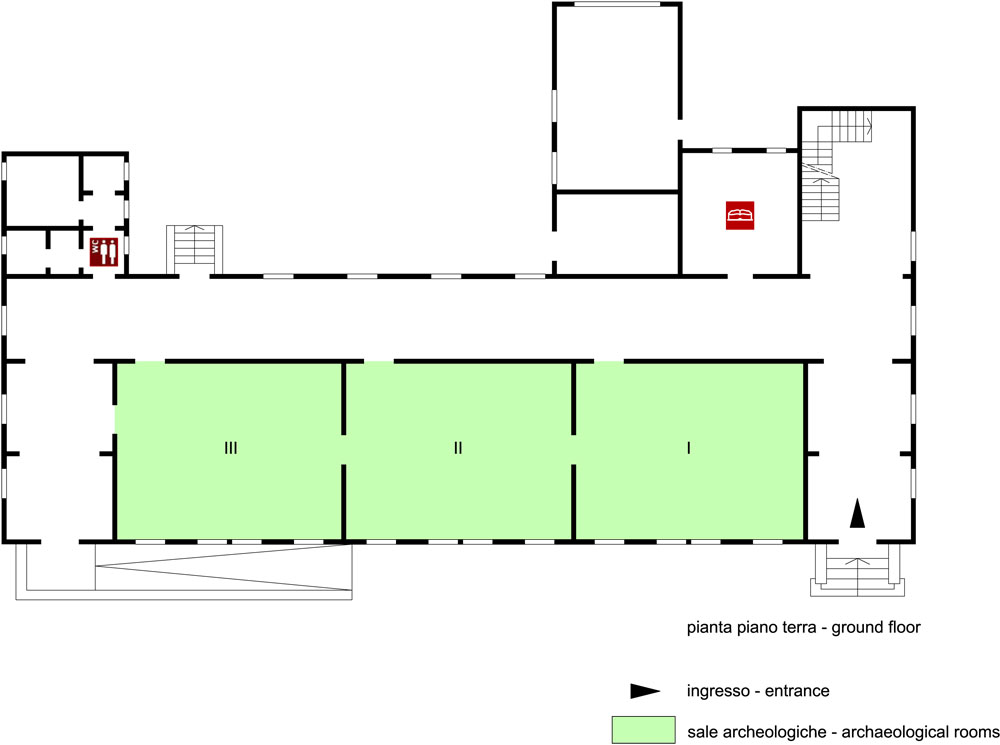|
|
File
Civic Archaeological Museum – Castelnovo Bariano
|
Via Cavo Bentivoglio 5047, loc. San Pietro Polesine – 45030 Castelnovo Bariano (RO)
– Fax 0425 84532 |
  |
|
Summary

The Civic Archaeological Museum of Castelnovo Bariano consists of three expositive rooms, which collect and display archaeological finds mainly of the Bronze Age from the area along the Tartaro river, in particular from Canàr (early bronze age), Canova (middle bronze age) and Marola (final bronze age). Beside the remarkable amount of prehistoric material, there are also Roman finds discovered in Mondonuovo and Stanghelle. The last section of the museum is devoted to the Renaissance pottery discovered in the site Torretta.
Collection history
The Civic Museum was first established in 1983 with the purpose of disseminating and popularizing the archaeological finds discovered thanks to the field walking activities carried out in Canàr.
Then the collection was further enlarged, including new pre- and proto-historic archaeological finds and a remarkable amount of Renaissance pottery, so that it was necessary to move it from the Town Hall of Castelnovo Bariano, which had hosted it until then, to a new and more suitable venue. Therefore in 1999 the museum was moved to its current venue, the primary school of San Pietro Polesine.
|

 The first room is completely devoted to the prehistoric settlement in Canàr, which developed during the early Bronze Age in the Polesine area near the municipalities of Castelnovo Bariano and San Pietro Polesine. The visit to the museum starts with a panel providing information on the geo-morphological characteristics of the area, to enable the visitors to understand the reasons leading people to decide to settle there. Next to it there is a scale model showing how the Terramare village looked like (huts built on piles). The following display cases contain mainly earthenware; indeed it is known that the most important domestic activity carried out in this site was the production of earthenware. Some objects typical of this area are the large truncated conical vases, jugs, biconical cups of different sizes, large bowls with cover and carinate basins, similar to those that can be found either in the contemporary Polada culture or in the Wieselburg-Gata culture, in the Danube area. The first room is completely devoted to the prehistoric settlement in Canàr, which developed during the early Bronze Age in the Polesine area near the municipalities of Castelnovo Bariano and San Pietro Polesine. The visit to the museum starts with a panel providing information on the geo-morphological characteristics of the area, to enable the visitors to understand the reasons leading people to decide to settle there. Next to it there is a scale model showing how the Terramare village looked like (huts built on piles). The following display cases contain mainly earthenware; indeed it is known that the most important domestic activity carried out in this site was the production of earthenware. Some objects typical of this area are the large truncated conical vases, jugs, biconical cups of different sizes, large bowls with cover and carinate basins, similar to those that can be found either in the contemporary Polada culture or in the Wieselburg-Gata culture, in the Danube area.
As regards the economy of the village, the main activities carried out were farming and stock-breeding, together with hunting, fishing, weaving (loom weights), spinning (spindle whorls) and the working of bone/deer antler (worked tools) and of flint (arrowheads and flints). Bronze was used less; indeed at the dawn of the Bronze age, it was used only for the production of few objects, usually ornamental accessories or particularly valuable items.
|

 In the first three display cases of the second room, there are other finds from Canàr. The display cases mainly contain truncated conical vases, jugs, biconical glasses and cups, a quern and a pestle. Then there is a model on a 1:10 scale reproducing the foundation of the medieval tower of Torretta. In the first three display cases of the second room, there are other finds from Canàr. The display cases mainly contain truncated conical vases, jugs, biconical glasses and cups, a quern and a pestle. Then there is a model on a 1:10 scale reproducing the foundation of the medieval tower of Torretta.
The following display case contains items dating back to the middle (16th -13th cent. B.C.) and final (13th-10th cent. B.C.) Bronze age from the sites of Canova and Marola respectively.
The objects discovered in Canova include a set of ceramic finds (carinate bowls and handle fragments), some flint arrowheads, a bronze blade, chisels and fishing hooks, whereas the materials found in Marola consist of earthenware and a remarkable amount of worked bone and antler objects.
The second section of the room displays items of the Iron age from the site Stanghelle and of the Roman period from the site Mondonuovo. The materials dating back to the pre-roman phase include a light brown ceramic pot, fragments of black varnish pottery, ladles of the “bucchero” type and a plate used as mortar. As regards the finds of the Roman age, it is important to highlight the presence of loom weights with different iconographic motifs, the fragment of a male statue in light coloured stone, the fragment of a stamped tile, the fragment of a bicolour floor mosaic, an oenochoe, a carinate vase with comb decoration, an unguentarium, a zoomorphic foot of an ivory box, a pin head depicting a cock head, a thin-walled bowl, lamps, fibulae, a bronze spoon, a bronze mirror handle, needles a bone stylus and a numismatic collection of bronze coins.
At the centre of the room, there are two large scale models reproducing the presumed elevation and the excavation of a country villa typical of northern Italy.
|

 The third room displays graffito, painted and glazed Renaissance pottery from workshops in Veneto, Emilia and Mantua. The third room displays graffito, painted and glazed Renaissance pottery from workshops in Veneto, Emilia and Mantua.
|

Admission: Negli orari di apertura
Solo su prenotazione
Su prenotazione
Ticket: No
 School access School access
 Disabled access Disabled access
Opening Days
| Tipology |
When |
Specs |
| Summer/Winter |
Monday |
Upon reservation |
| Summer/Winter |
Tuesday |
Upon reservation |
| Summer/Winter |
Wednesday |
Upon reservation |
| Summer/Winter |
Thursday |
Upon reservation |
| Summer/Winter |
Friday |
Upon reservation |
| Summer/Winter |
Saturday |
9.00 – 12.00 |
| Summer/Winter |
Sunday |
9.00 – 12.00 |
L’apertura al pubblico è momentaneamente sospesa dal 1 novembre 2010 al 30 marzo 2011. La riapertura è prevista per il 1 aprile 2011.
Recommended tour time (minutes): 45
 Toilet Toilet
 Parking Parking
 Brochure Brochure
Italian
 Information boards Information boards
Italian
 Captions under exhibits Captions under exhibits
Italian
 Guided Tours Guided Tours
 Educational activities Educational activities
 Educational workshops Educational workshops
 Library and documentation centre Library and documentation centre
| Il ritrovamento di Torretta: per uno studio della ceramica padana 1986, a cura di Ericani G., Venezia. |
| Salzani L. 1986, Canàr di S. Pietro Polesine (comune di Castelnovo Bariano), in Quaderni di Archeologia del Veneto, II, Verona, pp. 19-21. |
| Bonetto J. 2009, Veneto (Archeologia delle Regioni d’Italia), Roma, pp. 387. |
|

